
Dystrophic changes in intervertebral discs are called osteochondrosis. This problem can occur in a person at any age; Dysfunction of the intervertebral discs leads to the development of many serious concomitant problems. How to prevent the development of cervical osteochondrosis? What medicines and alternative therapies are used in the treatment?
Cervical osteochondrosis: what is it?
The cervical spine consists of 7 vertebrae and 8 paired nerve nodes. Osteochondrosis of the cervical spine develops against the background of degeneration of the intervertebral pulp in vitreous tissue. In this case, pathological changes affect the endings of nerve fibers and important vessels. Most often, the pathology affects the seventh and eighth vertebrae.
The disease is carefully disguised as other pathologies, manifested by attacks of headache and neck discomfort. Patients may complain of dizziness, nausea, and pressure problems. Most often, the disease is mistaken for heart and blood vessel problems.
Important! Often, against the background of problems with the vertebrae, a person suddenly begins to lose consciousness, feels short of breath, and the tongue may become numb.
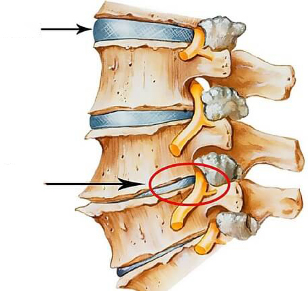
Cervical osteochondrosis is most often diagnosed in people after the age of 30, which is caused by the peculiarities of the location of the human skeleton, constant statistical and dynamic loads. The disease is rapidly becoming younger, recently, osteochondrosis occurs even in adolescents.
Causes of the disease
The development of osteochondrosis is influenced by physiological and pathological processes. They are closely related to each other, in medical practice they are always considered together.
Physiological changes are caused by irreversible age-related processes in the cartilage of the spine. They are located in the central part of the intervertebral disc and manifest as pinching of the pulp by fibrous tissues. Discomfort occurs during irritation of the nerve endings.
Pathological changes: In this case, the area of inflammation extends beyond the cartilage tissue, causing severe irritation of nerve endings and pinching of blood vessels. They arise against the background of improper nutrition, a sedentary lifestyle, appear in adolescents and people of the middle-aged category.
Important! In rare cases, osteochondrosis of the cervical spine may disappear on its own or manifest itself in the form of short-term episodes. The human body has many compensatory and protective functions, which for some time can neutralize pathological changes in cartilage.
Triggering factors:
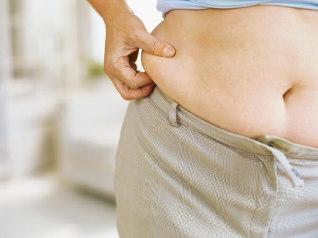
- sedentary work, lack of regular physical activity;
- frequent forced stay in an uncomfortable position;
- overweight;
- nervous overload, stressful conditions;
- injuries to the neck and occiput;
- hypothermia.
The cause of osteochondrosis can be congenital anomalies, autoimmune diseases.
Main functions
Cervical osteochondrosis is not always manifested by pain in a specific part of the spine, the disease often has a blurred clinical picture.
The main symptoms are dizziness, migraine, sudden changes in blood pressure.
When an urgent hospitalization is needed:
- numbness, loss of mobility of the muscles of the face or shoulder girdle;
- increased headache, which is accompanied by a deterioration in general well-being;
- lack of coordination;
- loss of consciousness.
Pain in the cervical spine often radiates to the shoulder girdle and upper extremities. A distinctive feature is that the pain syndrome is paroxysmal in nature, most often after waking up, sudden movements, while laughing, coughing and sneezing.
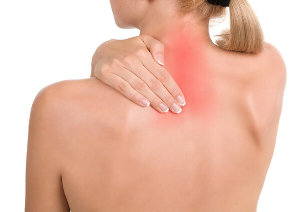
If the osteochondrosis is in the initial stage, the pain subsides quickly, almost always accompanied by a cracking sound in the neck, the muscles weaken, the skin loses sensitivity.
Important! With pathological changes in the sixth vertebra, pain in the thumb of the hand can be observed, with the defeat of the seventh vertebra, it affects the middle finger.
Symptoms of cervical osteochondrosis in women appear later than in men; the average age is 50 to 55 years.
How osteochondrosis is associated with other diseases
Cervical osteochondrosis and blood pressure: the connection between these conditions has been established for a long time. For osteochondrosis, it is precisely the strong drops in pressure during the day that are the characteristics, persistent hypertension is not inherent in this disease.
Increased pressure in osteochondrosis is accompanied by migraine, noise in the head, pain in the arms, legs and chest. At the same time, the sensitivity of the skin in the neck region is noticeably reduced, stress can lead to a jump in pressure and a long stay in an uncomfortable position.
Cervical osteochondrosis and dizziness - occurs against the background of severe pain syndrome, impaired cerebral circulation and transmission of nerve signals, problems with the vestibular apparatus.
With osteochondrosis, non-systemic dizziness manifests itself more often: there is no sensation of rotating objects, but the person is very ill, it is difficult for her to stand.
Important! With frequent attacks of dizziness, it is necessary to visit not only a neuropathologist, but also an otorhinolaryngologist, to exclude the presence of pathological changes in the nasopharynx.
Headache accompanies osteochondrosis in almost 90% of cases. It occurs against the background of vascular spasms, pinching of nerve endings, increased intracranial pressure. It manifests itself in different ways: pulsating, deaf.
Headache attacks in osteochondrosis are similar to sensations in high blood pressure, angina pectoris, heart attack, stroke.
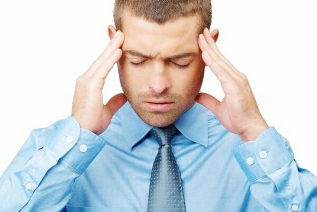
Panic attacks occur with osteochondrosis in the context of cerebral circulation disorders. At the same time, a person experiences irrational fear, physical discomfort. The duration of the attack is 2-3 minutes to an hour, they can be repeated several times a day. Panic attacks are accompanied by a feeling of heaviness in the head, incessant tears, apathy, and lethargy. With severe attacks, you need to take tranquilizers, regularly visit a psychiatrist.
Fears and depression occur with osteochondrosis in the context of constant pain, a forced change in the usual way of life.
Diagnostic methods
People with osteochondrosis may experience pain in the back of the head, chest, and arms; Such a blurry picture of the disease significantly complicates the initial diagnosis.
Prevents early diagnosis and uncontrolled ingestion of painkillers by people. A person feels healthy without pain. Seek medical help late, when irreversible processes develop in the tissues of the cervical joints.
Important! Only a neurologist deals with the treatment of osteochondrosis.
The external examination is to identify mobility and pain in the neck. After that, the doctor prescribes X-rays in various projections and computed tomography. If a hernia is suspected, an MRI should be done. Doppler ultrasound is done to assess the condition of the arteries and blood vessels.
Principles of drug treatment
Pharmacological treatment aims to eliminate pain, inflammation, return normal mobility and blood circulation.
Main drug groups:
- painkillers in the form of tablets and injections are intended to eliminate the pain syndrome;
- steroidal and non-steroidal anti-inflammatory drugs;
- chondroprotectors help restore cartilage tissue;
- muscle relaxants relax muscles, are used as auxiliary pain relievers; they contain glycerin, benzimidazole, they have a large list of contraindications;
- vitamin complexes - must contain all vitamins of group B, D, E, retinol, ascorbic acid;
- artificial histamine analogs: help eliminate problems with the vestibular apparatus;
- means for external use in the form of gels, ointments: help to improve blood circulation, relieve spasms and pain, warm and relieve pain.
Important! The vitamins contained in food are not enough to treat osteochondrosis.
Drugs that improve cerebral circulation in cervical osteochondrosis are a mandatory component of therapy, they dilate blood vessels and improve blood flow. Nootropic drugs that improve metabolic processes in the brain, restore memory and thinking.
Surgery for osteochondrosis is rarely used. An operation is essential for signs of paralysis of the upper extremities, acute disturbance of the blood supply and cerebral edema.
Additional treatments include massage, manual push-pull therapy, dosed traction, relaxation techniques, and acupuncture.
How to treat osteochondrosis at home
Home treatment involves regular performance of special exercises, the use of special orthopedic devices. As support therapy, you can use traditional medicine recipes.
The Shants collar is designed to eliminate tension in the spine, reduce stress and strengthen the neck muscles. The head and neck are fixed in the correct position, which allows you to get rid of insomnia and prevent the progression of pathological changes. You need to wear a necklace not all day, but 2-3 hours before going to bed.
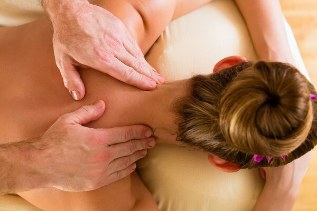
Self-massage will help eliminate pain and spasms, while rubbing in ointments that improve blood flow. The procedure must be performed sitting, the posture is comfortable and relaxed. It is necessary to caress, rub in circles, touch not only the neck, but also the shoulder girdle.
Important! With cervical osteochondrosis, any kind of heating is prohibited, except for a bath and a sauna.
Healing baths relieve pain and inflammation well, allow the spine to relax. Water procedures should be performed every other day, the course consists of 15-20 procedures.
Bath recipes:
- Mix 150 g of chamomile and mint and prepare the mixture with 5 liters of boiling water. Leave the infusion for 2 hours, filter.
- Take 20 g of mint, lemon balm and birch leaves. The collection is made in 6 liters of boiling water, after 2 hours filtered.
- To prepare an infusion of sage, you will need 300 g of herbs and 5 liters of boiling water. The healing solution will be ready in 2 hours.
For oral administration, you can prepare an infusion of yarrow; This will help to quickly eliminate inflammation, cramps, and pain. Prepare 230 ml of boiling water 6 g of grass, leave it in a closed container for an hour. Take 15 ml 3 times a day.
A solution of 15 g of sea salt and 1 liter of water helps to cope with osteochondrosis. Bring the mixture to a boil, cool completely. In the composition, moisten the natural fabric, apply on the back of the neck.
Possible complications
With timely diagnosis and proper treatment, cervical osteochondrosis develops without particular complications. Otherwise, serious pathological changes develop that can cause disability.
Why is cervical osteochondrosis dangerous?
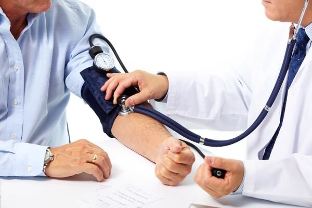
- vertebral artery syndrome: functional and organic changes caused by impaired blood circulation in the brain;
- high blood pressure, arrhythmia;
- numbness, weakness, muscle atrophy of the upper extremities;
- bulge, hernia;
- VSD;
- neurological disorders.
Physiotherapy exercises for osteochondrosis
Exercise therapy for cervical spine osteochondrosis can restore nutrition in damaged tissues and restore blood circulation.
During recovery gymnastics, it is forbidden to strongly rotate the head, make sharp bends. Only imitation of such movements is allowed. You can do a series of exercises for no more than 2 minutes; prolonged loads can provoke a complication of osteochondrosis.
Shishonin developed an effective set of exercises for cervical osteochondrosis. The principle is that all movements should be performed smoothly, each position should be fixed for 15-30 seconds. During gymnastics there should be no painful sensations, each exercise should be repeated 5 times.
Description of exercises:
- Sit up straight, tilt your head to the right. When muscle tension appears, fix the position. Make 5 slopes on each side.
- The head tilted back and forth is done by analogy with the previous exercise.
- Stretch your chin alternately towards the left and right shoulder. The back is straight, it cannot be rounded.
- Turn your head left and right, in each position to stay for 30 seconds.
- Keep doing side twists, but use extra arms. When turning to the right, the right hand should be on the left shoulder and vice versa.
- Close your palms, raise your arms above your head, turn sideways.
- Stretch your arms, bring them to the sides and slightly back, stretch your chin forward.
Preventive measures
Prevention of osteochondrosis consists of simple steps; if done regularly, serious health problems can be avoided. Especially prevention is necessary for the elderly and those who spend a lot of time sitting.
How to prevent osteochondrosis:

- take a hot shower every day for at least 10 minutes;
- regularly visit the bathhouse, sauna to eliminate spasms and tension in the neck;
- sleep on an orthopedic pillow and a special mattress;
- do a short five-minute warm-up every hour while sitting.
The best sports for the prevention of osteochondrosis are swimming, yoga, aerobics, special gymnastics to strengthen the cervical muscles.
People at risk are prohibited from running, jumping, or body building. The critical weight is 10 kg, the weights must be carried with both hands. In addition, you can use a corset that protects the spine.
Sergei Bubnovsky describes well the preventive measures for osteochondrosis. In his book, you can find out what back pain is dangerous, how to restore health without injections and corsets, and find a set of special exercises.
Cervical osteochondrosis is a disease that can affect everyone. Timely diagnosis and prevention, a healthy and active lifestyle will help prevent the development of serious pathological changes in the spine, give you good health and excellent mood.



















































